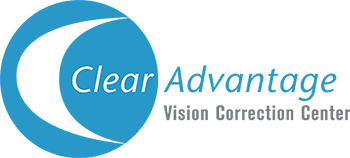The following information answers questions that we frequently hear from our patients about PRK however, these questions can also apply to LASIK, Advanced LASIK and Zyoptix Customized LASIK. For more information, please contact us.
What makes PRK different from traditional LASIK?
PRK differs from LASIK in that no flap of tissue is created prior to resculpting the cornea with the excimer laser. PRK is a good option for patients whose corneas have an unusual curvature or are too thin for LASIK.
PRK is also a better option for patients with moderately dry eyes. PRK can treat nearsightedness, farsightedness, and astigmatism.
Is the same laser used for LASIK also used for PRK eye surgery?
Yes. Clear Advantage Vision Correction Center uses the same Technolas 217z excimer laser or Zeiss Mel80 laser to perform PRK and LASIK, and our pre-operative evaluation is also identical including the use of the Orbscan and Zywave wavefront sensing technology.
Who is a good candidate for PRK eye surgery?
PRK candidates are generally patients whose corneas have an unusual curvature or are too thin for LASIK. PRK is also a better option for patients with moderately dry eyes. PRK corrects nearsightedness (myopic), farsightedness (hyperopic), and astigmatism. Additionally, a suitable PRK candidate will have a stable vision prescription for approximately one year and good overall eye health.
PRK candidates must be at least 18 years of age (and preferably 21) so that the eyes – and vision – will have matured sufficiently. Although Clear Advantage has performed PRK on people over the age of 60, in most cases, significant changes, such as the formation of cataracts, have already started.
In these cases, our surgeon will recommend a cataract evaluation to determine whether a lens replacement will provide better visual results.
How long does a PRK procedure take?
Even though the procedure itself is fast, we avoid rushing the patients in and out and like to take plenty of time with each of them. We tell our patients to plan to be in the laser center for approximately one hour.
However, because the time for the actual laser treatment is typically less than one minute per eye, most patients will be in the office for 45 minutes, and in actual surgery for about 15 minutes.
Additionally, our beautiful and comfortable waiting area is an ideal spot to have a friend or family member wait for the patient and assist the patient through post-operative instructions.
Is PRK painful?
Throughout the entire procedure, your eyes will be numbed so that you will not feel any discomfort or pain. For the first couple of days after the surgery, you may experience mild tearing or a foreign body sensation, like an eyelash or a backward contact lens in your eye. A topical eye drop is supplied to help alleviate this”scratchy” sensation.
Will I have both eyes treated on the same day?
Yes. Prior to surgery, the eye is anesthetized with eye drops. The anesthetic used is the same powerful eye drops used during cataract surgery, which is far more invasive than PRK. As a result, it is considered a painless procedure.
Is the procedure done under anesthesia?
Yes. Prior to surgery, the eye is anesthetized with eye drops. The anesthetic used is the same powerful eye drops used during cataract surgery, which is far more invasive than PRK. As a result, it is considered a painless procedure.
For the first few days after the surgery, you may experience mild tearing or a foreign body sensation, like an eyelash or a backward contact lens in your eye. This sensation disappears after sleeping and, if needed, a topical eye drop is supplied for use after surgery.
How soon can I go back to work?
Following the PRK surgery, you may experience some discomfort and blurriness which will last for a few days. Tylenol®, aspirin, ibuprofen, or similar over-the-counter pain medications are usually adequate to keep patients comfortable. A topical medication will also be supplied to help with any”scratchy” sensation.
Because the eye is protected with a contact lens to aid in healing, you can expect your vision to be fairly blurry for the first few days to a week. It will then begin to improve.
It is recommended that patients do not drive for the first 3 – 4 days after PRK because of their fluctuating vision and the contact lens bandage. Many patients elect to have PRK surgery on Thursday and can usually return to work and most normal activities by Monday.
How often do I need to return to Clear Advantage Vision Correction Center for my follow-up care?
Follow-up appointments are critical in monitoring your progress after surgery. Although a large majority of our patients do not have any complications after surgery and are enjoying their lives without contact lenses or glasses, it is imperative that you are seen on a regular basis after surgery.
Your follow-up appointments will be as follows:
- Surgery Day
- The day after surgery (1-day follow-up)
- 4 days after surgery (to remove the bandage contact lens)
- One week after surgery
- One month after surgery
- Three months after surgery
- One year after surgery
Can I see my regular doctor for my follow up visits?
We work closely with over 475 optometrists in the surrounding area. If traveling to our office for follow up appointments is an issue, chances are your regular eye doctor is already part of our network.
If you do not have a regular eye doctor, we may be able to find a doctor in your area that is willing to provide your follow-up care at no additional charge to you.
What are the most common side effects of laser vision correction?
A small number of patients have reported fluctuating vision, night glare, and dry eyes during the first few weeks after PRK. However, these side-effects are greatly reduced with our advanced screening and treatment technology, such as the Orbscan.
For example, we measure the size of your pupils and the thickness of your cornea to prevent night vision problems. Advanced or Customized PRK also reduces the likelihood of glare and halos at night for those with larger pupils or more significant prescriptions.
Will I still need glasses after my PRK procedure?
For most patients, PRK will correct refractive errors so much, that they no longer require the use of their eyeglasses or contacts.
However, the need for reading glasses occurs naturally in most people in their early 40’s whether they are nearsighted, farsighted, or normal. Laser vision correction can be calibrated to avoid reading glasses after 40 if one eye is kept slightly nearsighted – this is called Monovision LASIK.
What is “Monovision LASIK/PRK”? Is it a good option for people who wear bi-focal contacts or glasses?
The simple answer to this question is”maybe”. Although LASIK, PRK, and Zyoptix can achieve perfect vision, you still could develop a condition called presbyopia typically between the ages of 40 and 50. Presbyopia is the inability of the eye to focus at all distances, usually noticed when the fine print starts to blur.
Presbyopia is said to be caused by the hardening and thickening of the natural lens of the eye (crystalline lens), which is located inside the eye. Normally, both your eyes work together equally when you look at an object, to produce what’s called binocular vision. However, you probably have a dominant eye that your brain tends to favor (most right-handed people are right-eye dominant, for example).
Optometrists often take advantage of this”one-eye dominance” to produce Monovision. Many people who require bifocals already have tried Monovision using contact lenses.
When using contact lenses to demonstrate Monovision, one eye is fitted for distance vision (typically the dominant eye) and one for near vision.
LASIK treatments can be performed in the same manner, essentially treating both eyes for distance, but leaving the non-dominant eye slightly “undercorrected” to produce a dominant eye for near vision.
Not everyone likes their vision treated this way, so if Monovision is not an option, you would be treated for distance vision and both eyes and require reading glasses after surgery.
Is PRK permanent?
Yes, the laser permanently etches the correct shape to your cornea.






